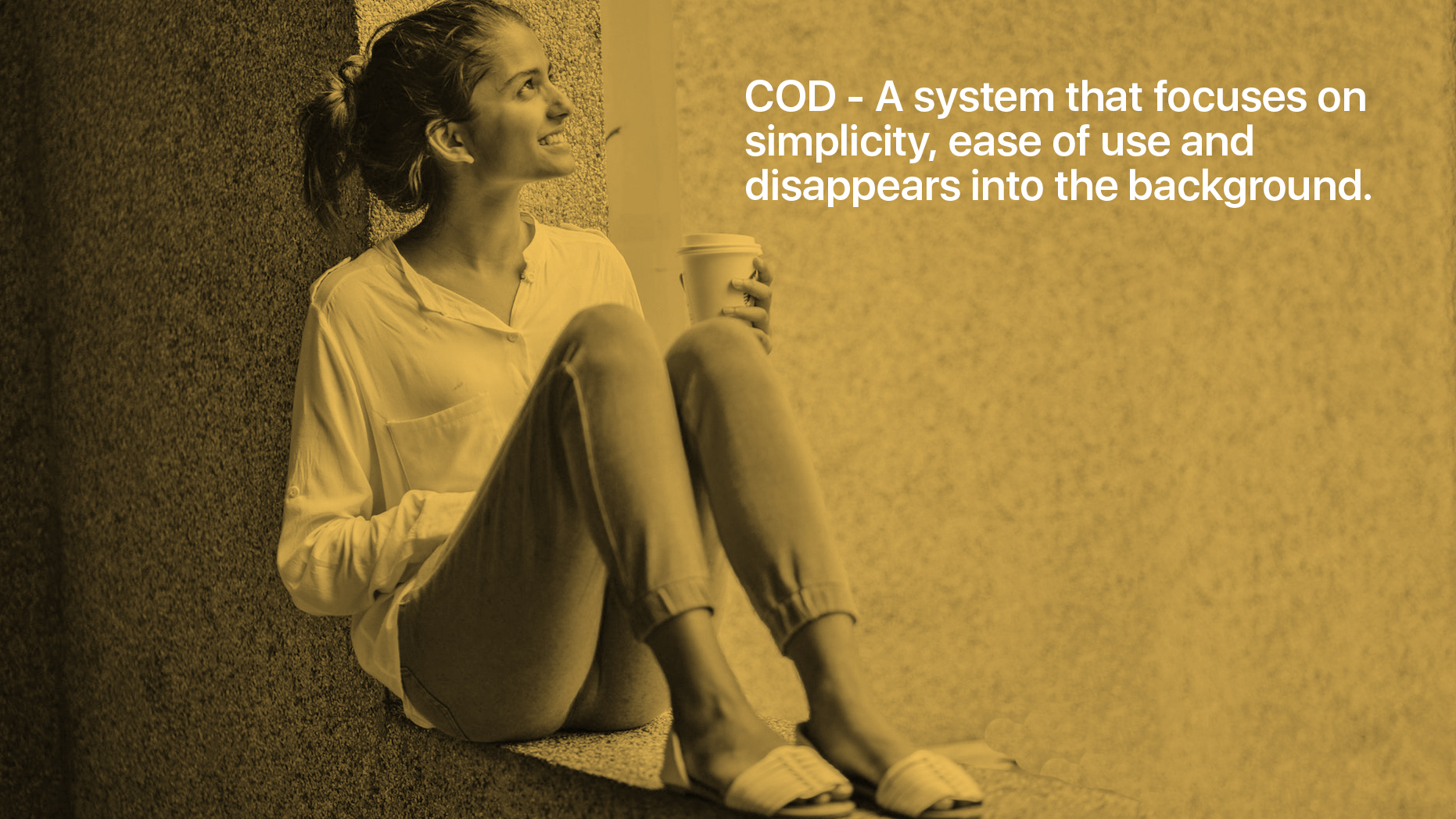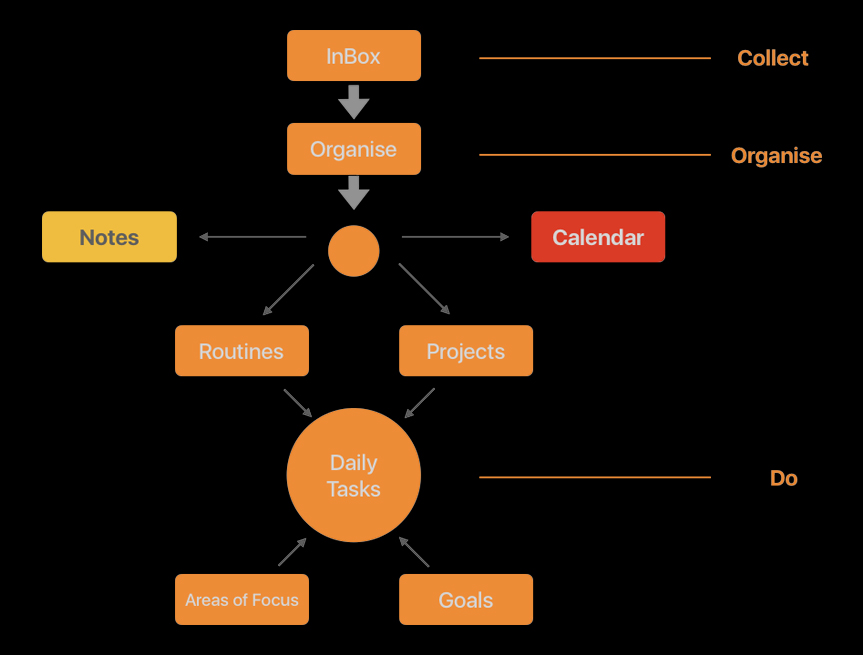COD — The Simple, Easy To Use Productivity System Anyone Can Learn.
Over the years I have been practising better productivity I have studied many of the ‘systems’ available. Most are quite complex, many involve a lot of hours of setting up and all involve a disproportionate amount of time to maintain. For a lot of people this is not too much of a challenge, but for most people, a productivity system that allows them to just get on with their work and disappears into the background is the nirvana.
After much studying, I came up with my own system that focuses on simplicity, ease of use and disappears into the background and only requires around ten minutes at the end of the day to maintain. Now, if you cannot find ten minutes at the end of the day, then you have far bigger problems than time management and productivity. Everyone can find ten minutes each day to organise their stuff if they are serious about becoming better organised and more productive.
Let me introduce you to COD — Collect, Organise and Do.
COD is based on the basic fundamentals of all great productivity systems. That is you need to collect everything that means something to you. That could be a commitment or an event. It could be an idea or something you would like to look into at some point in the future. Once you have collected everything, you need to organise what you collected in a place you trust you will be able to find what you collected later. That could be a notes application, it could be a digital cloud drive or it could be a simple paper-based notebook or folder. And finally, you need to be doing your work and the things you want to do at the right time.
So how does all this work?
Throughout the day you collect and do. This means the tools you use to collect your commitments, appointments and ideas should be easily accessible and are with you everywhere you go — after all, great ideas can come to us at any time in any place. Today, those tools are most likely to be your mobile phone or computer, but it could just as easily be a small pocket notebook. Your collection method needs to be as fast as possible and this means the applications you use should be optimised for speed of capture. This is the reason why I use Todoist for my commitments and todos and Evernote for my ideas and notes. You might prefer another method or application, there are a lot of choices out there. Choose carefully and make sure that whatever tool you use, whether it is digital or paper-based, it is easy and fast to collect.
Organise.
Next comes the organising. Now, this is a very personal subject and you should be organising your stuff in a way that works for you. A mistake I find a lot of people making is copying someone else’s organisation structure. The chances are someone else’s system will not work for you. Our brains are wired differently. I grew up in an analogue world with physical filing cabinets and plastic in-trays, which means my brain is wired to organise alphabetically. I have tested other ways to organise, but nothing works as well as a simple alphabetical system. My notes are tagged with the subject the note is related to. For example, for my Korean study programme, I have a Notebook in Evernote called “Korean” and I tag notes I collect related to Korean with the subject. It could be “Korean vocabulary — eating out” or “Korean vocabulary — questions”. I know those tags are long, but they work for me.
Once you have decided on how you want to organise things you should test it for speed. If you have an organisational structure that fits the way your brain works, organising your stuff should be very fast. To start with, you may find you have to do a bit more thinking about where something goes, but after a few days or weeks, you will find you can organise everything you collected almost without thinking.
Organise your todos by project or areas of focus?
This question is a difficult one to answer. For some people, projects is how they think. Each project they have is organised with its title and deadline and the tasks required to complete that project are listed within that project. For others, their areas of focus is how they like to organise things. Areas like family, hobbies, health and fitness for their personal life and marketing, sales, personal development for their professional life. Again, this is really up to you and how your brain works. If you are a beginner to productivity and time management, then experiment for a few weeks. I use a combination of both these. My areas of focus help to keep me organised with my various roles as a husband and a business owner. It also helps me to stay focused on my health and fitness and hobbies. I like to have project work like writing books, developing courses and holiday plans as separate projects. Choose what works best for you. You may find you need to experiment a little to discover what works.
When to do your organising.
Organising is best done daily. I have found if you try and organise all your collected stuff at the end of the week, the job of organising becomes too much. Once it becomes too much you will resist doing it and you will soon find yourself back to being a disorganised mess. Instead, spend ten minutes at the end of the day organising everything you collected that day. I organise every day Sunday through Thursday and allow myself a break on a Friday and Saturday. This is because I find I don’t collect very much on those days and the things I collect can be organised when I do my weekly review on a Sunday afternoon. If you are organising every day, and you have developed a system that works seamlessly and is fast, then all you will need is ten minutes each day to organise. At first, it will take a little longer than ten minutes. But once you have developed the habit and are comfortable with the way you have organised your stuff, then ten minutes is all it should take. I call this my “Golden Ten” minutes.
The rest of the time you are doing. Doing the work you have assigned for yourself. COD is simple, fast and is designed to work the way you think. When you build a system around the way you think and naturally organise stuff, you will find being better organised and more productive is easy.
The COD workflow.
To help you better understand the flow of COD, below is a workflow diagram that although looks complex, is actually simple to use. I have also put it in ‘dark mode’ for you because it seems very trendy to have a dark-mode option these days. If you prefer a ‘light mode’ version you can download a PDF copy from my downloads page on my website.
You can also enrol in my FREE Beginners Guide To Productivity where I take you through the principles of COD and how to get it set up using a todo list manager, a notes app and a calendar.
Good luck and feel free to reach out to me if you have any questions. I will be more than happy to give you some guidance if you need it.
Thank you for reading my stories! 😊 If you enjoyed this article, please hit that like button below. 👍 It would mean a lot to me and it helps other people see the story.
My purpose is to help 1 million people by 2020 to live the lives they desire. To help people find happiness and become better organised and more productive so they can do more of the important things in life.
If you would like to learn more about the work I do, and how I can help you to become better organised and more productive, you can visit my website or you can say hello on Twitter, YouTube or Facebook and subscribe to my weekly newsletter right here.



